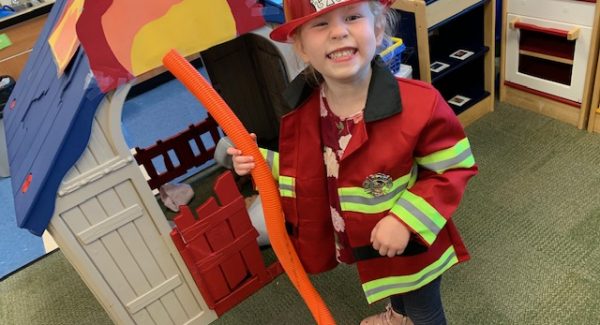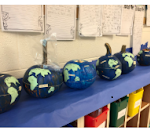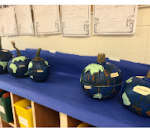
Early Childhood
This month our themes were Fire Safety and Pumpkins. We introduced the numbers to call in case of an emergency 911. We practiced STOP, DROP and ROLL. We dressed up like firefighters, pretended to help put out fires and played with fire trucks. We learned many new vocabulary words like: helmet, fire extinguisher, hose and many more.
For our pumpkin theme we explored PUMPKINS! We learned that pumpkins come in many different shapes and sizes, some are bumpy and some are smooth. We learned the life cycle of the pumpkins, seed, sprout, vines, flower and pumpkin.
We continued to practice writing our first names, shapes identification, letter identification and number identification.
Next month our theme will be FALL LEAVES!
Kindergarten
Kindergarten has been learning all about the Fall. We have been reading both fiction and nonfiction books about fall and pumpkins. We have been counting and playing games with letters and sounds as well as learning how to be a superstar writer.
Parent Tip #2 Tracking Print:
Tracking print is an important tool a beginning reader must learn. Tracking print is when you point to each word as you read it aloud. While reading with your child, encourage them to track print as you read aloud or as you’re reading together. Tracking print helps your child learn new words by seeing them and hearing you read them aloud.
1st Grade
First grade just finished their light and sound unit. The students had so much fun completing experiments to go with these topics!
2nd Grade
Second graders have been learning about the oceans, continents, and landforms. Students made pumpkin globes to represent our Earth. Students researched a landform and created a digital slideshow. Some second graders even demonstrated their knowledge of their landform in the form of a song.



Reading/EL
This month, the students have been concentrating on determining the main idea and details in nonfiction text. After students have read one section of text, they practice identifying several facts that connect. They think about what the section is mostly about. As they read other sections, they may need to revise their main idea. After reading, they think about what they learned, what facts go together and what is the big idea. When students finish reading a nonfiction text, here are some key questions they can ask themselves:
- What main idea and details did I learn?
- Will I be able to apply this information in real life?
- Who can I share this information with?
- Am I interested in expanding my research on this topic?
- What was the writer’s opinion or thoughts about this topic?
- How would I evaluate the text and would I recommend this book or article to someone else?

